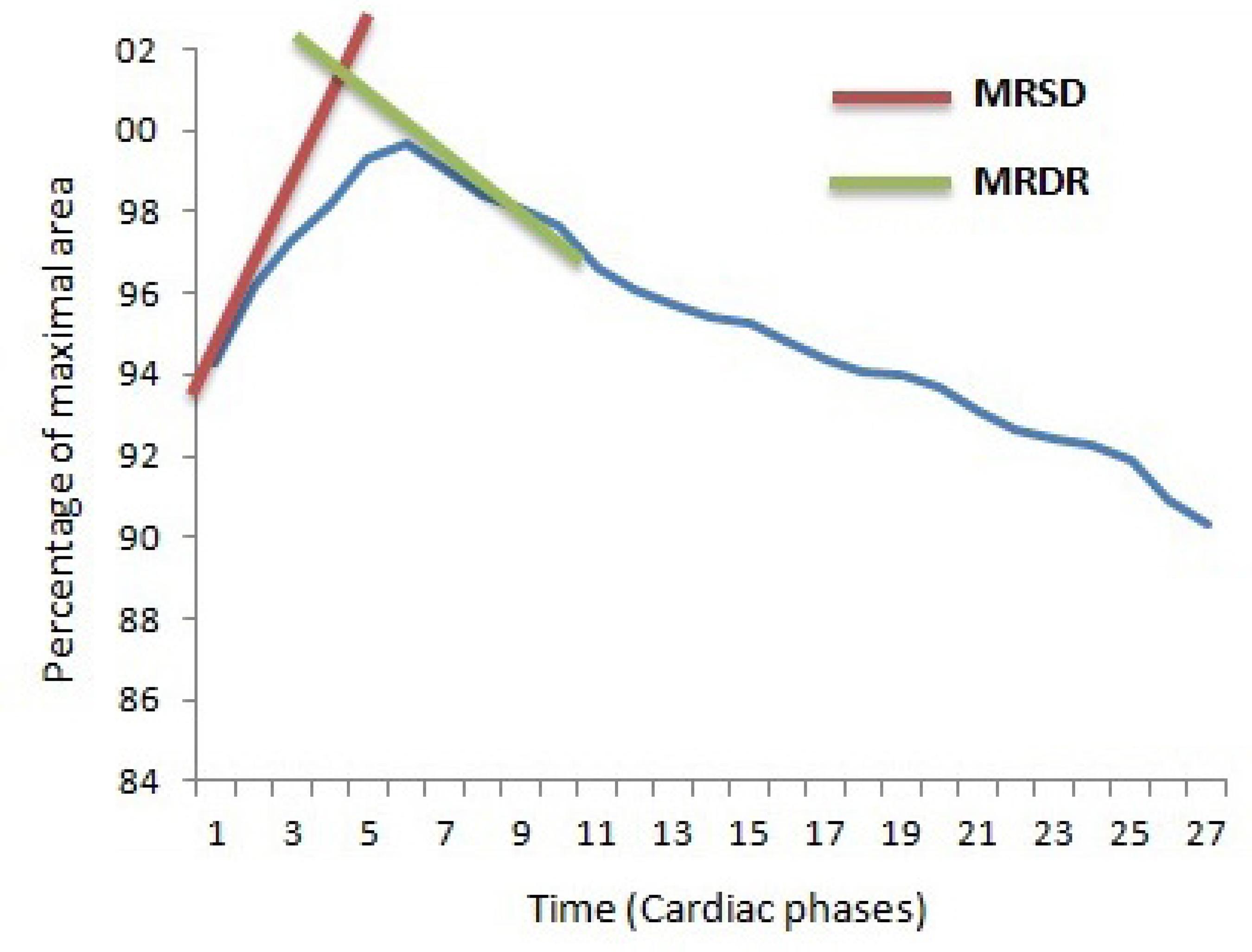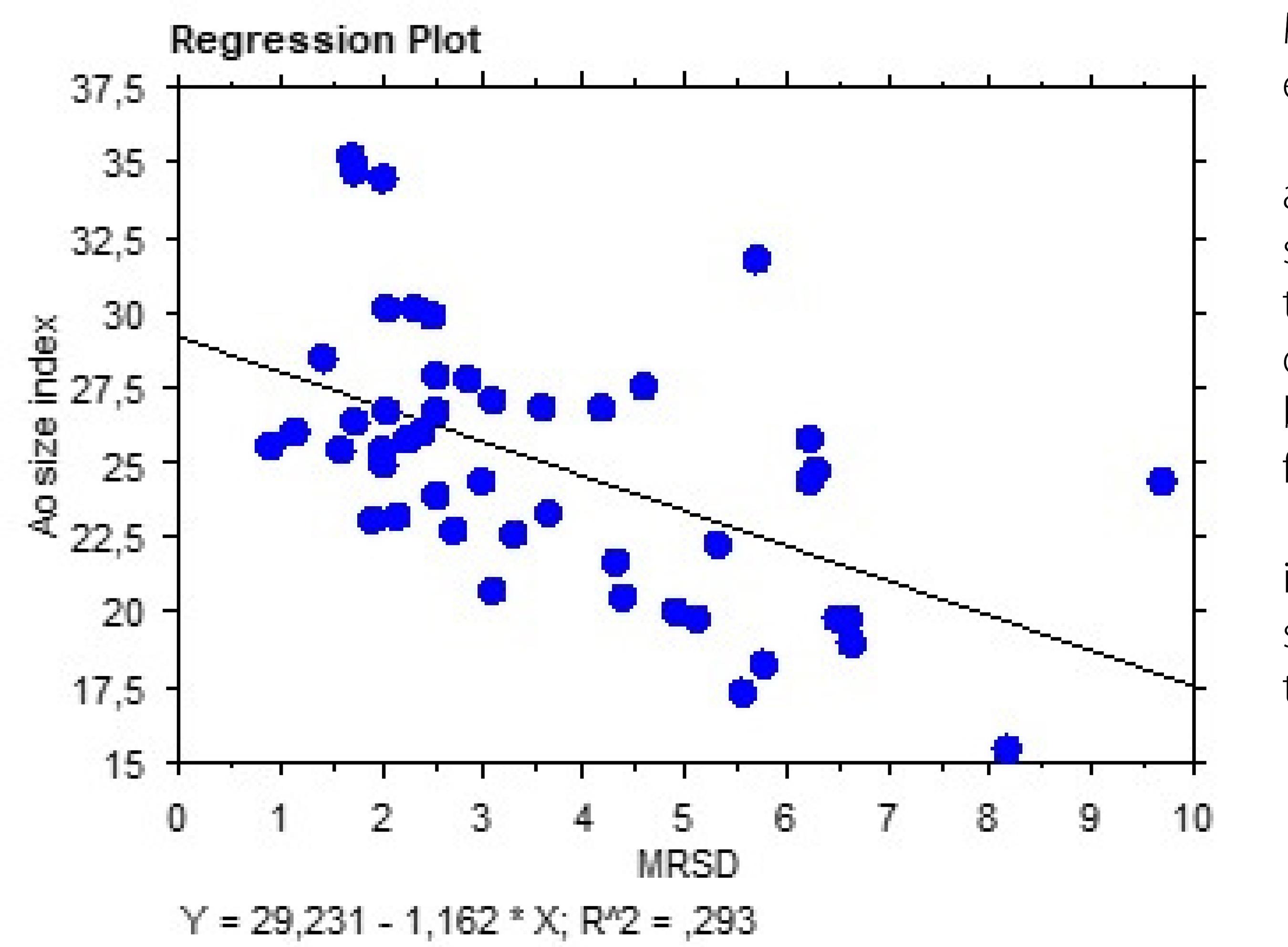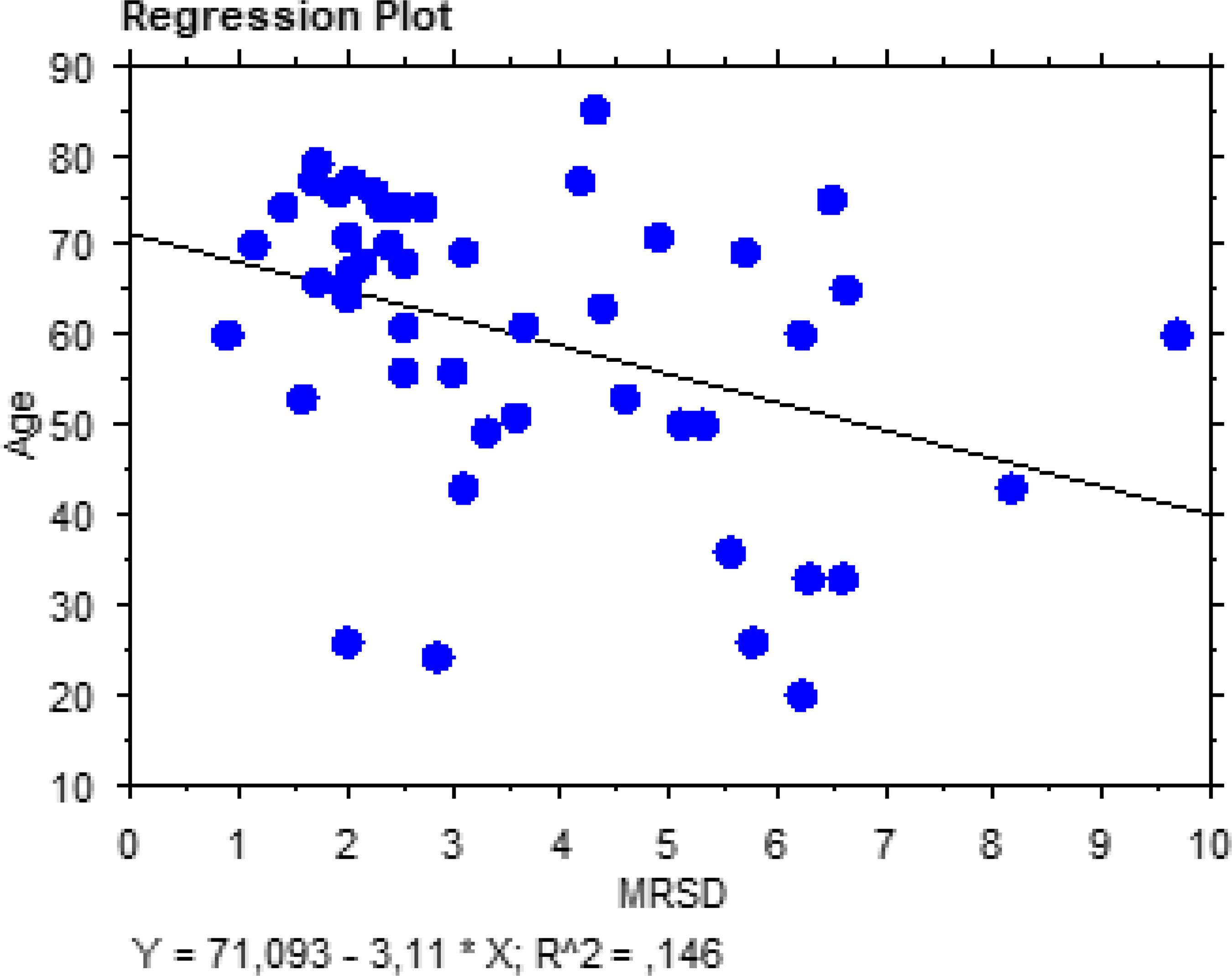Abstract
Objective:
To evaluate the aortic wall elasticity using the maximal rate of systolic distension (MRSD) and maximal rate of diastolic recoil (MRDR) and their correlation with the aortic size index (ASI).
Methods:
Forty-eight patients with thoracic aortic aneurysm were enrolled in this study. A standard magnetic resonance imaging (MRI) protocol was used to calculate MRSD and MRDR. Both MRSD and MRDR were expressed as percentile of maximal area/10-3 sec. ASI (maximal aortic diameter/body surface area) was calculated. A correlation between MRSD, MRDR, ASI, and the patient’s age was performed using regression plot.
Results:
A significant correlation between MRSD (t=-4,36; r2=0.29; P≤0.0001), MRDR (t=3.92; r2=0.25; P=0.0003), and ASI (25±4.33 mm/m2; range 15,48-35,14 mm/m2) is observed. As ASI increases, aortic MRSD and MRDR decrease. Such inverse correlation between MRSD, MRDR, and ASI indicates increased stiffness of the ascending aorta. A significant correlation between the patient’s age and the decrease in MRSD and MRDR is observed.
Conclusion:
MRSD and MRDR are significantly correlated with ASI and the patient’s age. They seem to describe properly the increasing stiffness of aortas. These two new indexes provide a promising, accessible, and reproducible approach to evaluate the biomechanical property of the aorta.
Keywords:
Aortic Aneurysm, Thoracic; Systole; Diastole; Aorta; Elastic; Dilatation, Pathology; Magnetic Resonance Imaging






